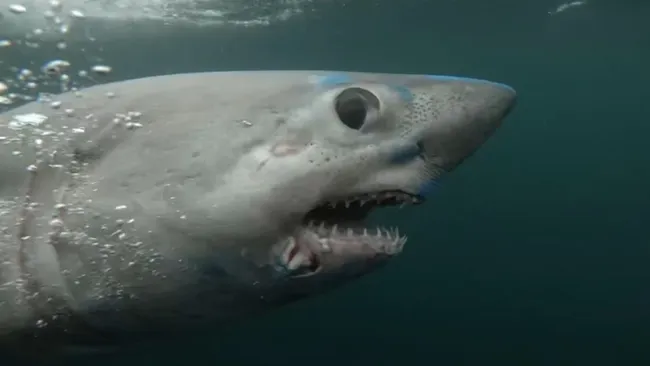Unexpected Shark-on-Shark Predation Sheds Light on Marine Ecosystem Dynamics

In a surprising development for marine biology, scientists have identified a potential culprit in the disappearance of a pregnant porbeagle shark off the coast of Bermuda, Newsweek reports.
The case is described as a real-life underwater mystery, with the primary suspects being a great white shark or, less likely, a shortfin mako shark. If confirmed, this would be the first known case of shark-on-shark violence involving such large species.
The study, led by Brooke Anderson and published in Frontiers in Marine Science, reveals that the predation event is unprecedented.
“This is the first documented predation event of a porbeagle shark anywhere in the world,” said Anderson.
Porbeagle sharks, which are known for their large size and long lifespan, live in the Atlantic, South Pacific, and Mediterranean oceans. They can grow up to 12 feet in length and weigh around 500 pounds. Their reproductive cycle is notable for its slowness, with females giving birth to an average of four pups every one to two years after reaching reproductive maturity at the age of 13. Because of their slow reproduction rate, porbeagles are especially vulnerable to threats such as overfishing and habitat degradation. The International Union for Conservation of Nature (IUCN) currently lists the species as endangered in the northwest Atlantic and critically endangered in the northeast Atlantic and Mediterranean.
Anderson and her team tagged a pregnant porbeagle during a 2020 research expedition off the coast of Cape Cod in Massachusetts. The shark was outfitted with two satellite tags: a fin-mounted transmitter that tracked its location and a pop-off satellite archival tag (PSAT) that measured depth and temperature. Initially, the shark behaved normally, cruising at depths between 300 and 2,600 feet with temperatures ranging from 44 to 74°F.
However, on March 24, 2021, the PSAT data demonstrated a significant shift. The temperature remained constant at 72°F for four days, despite the shark’s depth of 500 to 2,000 feet. This information led researchers to conclude that the shark was eaten by a larger predator, which then excreted the PSAT.
The researchers considered two potential predators: the great white shark and the shortfin mako shark. Both species are known to inhabit the area and could theoretically prey on a mature porbeagle. However, the data indicated that the great white shark was the more likely predator. The great white’s behavior matched the data recorded by the PSAT more closely than that of the shortfin mako, which is known for its rapid and oscillatory diving patterns.
“The predation of one of our pregnant porbeagles was an unexpected discovery. We often think of large sharks as being apex predators. But with technological advancements, we have started to discover that large predator interactions could be even more complex than previously thought,” Anderson stated.








